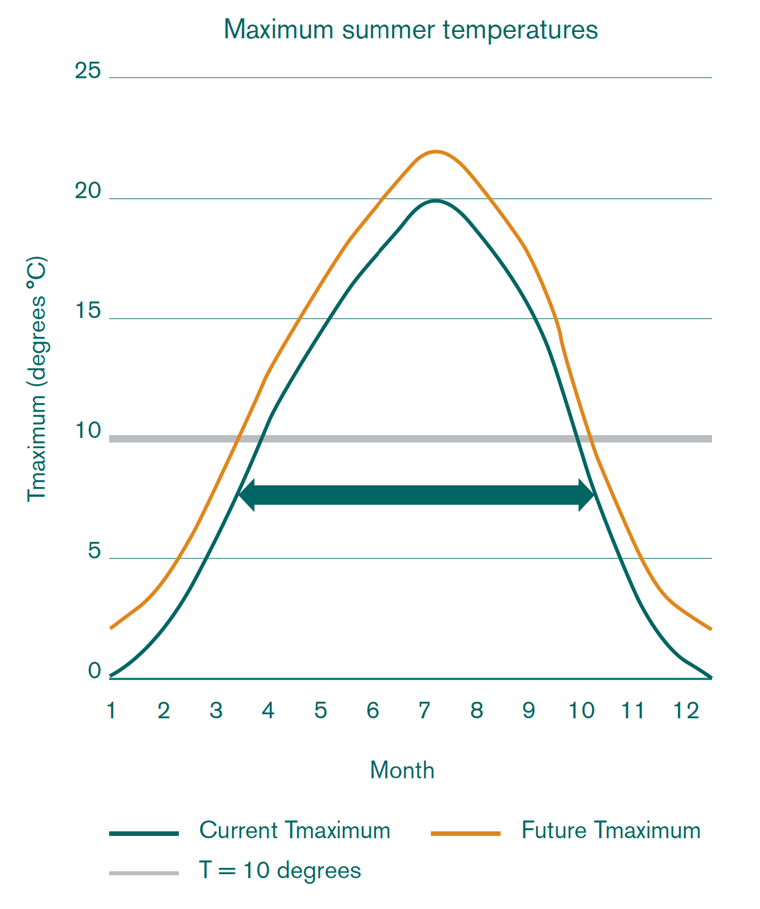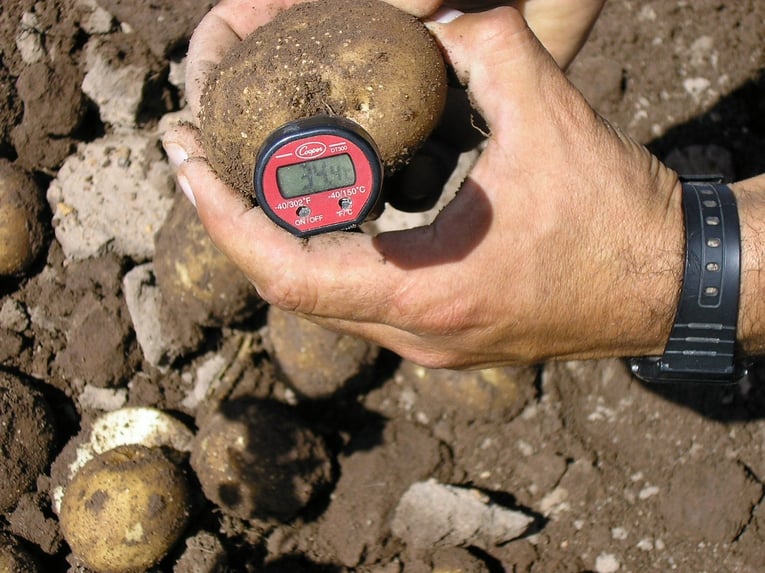
In the Potato handbook, climate change is defined as the altering of long time weather as a consequence of the increase of greenhouse gases, with an expected temperature increase of 2°C between 2020 and 2060. The increased CO2 concentration and temperature have an effect on tuber yield and quality. Owing to uncertainties regarding temperature increase, its distribution over regions in the world and over the year, its repercussions for cloudiness and rainfall, the effects on tuber quality can be predicted with less certainty than those on tuber yield.
In temperate climates with a long growing season and a high daily growth rate, the number of tubers per plant with unaltered practices stays the same. With a 50% yield increase over a 40-year period, the tuber size increases 50%. The length, width and height each increase by 15%, so a 50-mm tuber now is a 58 mm tuber in 40 years and the 10 kg tuber count goes down 33%. This without adaptation that possibly consists of a higher seed rate and using varieties with more tubers per stem.
Dry matter concentration
The dry matter concentration goes up one or two percentage points. This adjusts the predicted tuber size a fraction downward: After all, the dry matter is less diluted by water. Larger tubers in combination with more frequently occurring heat waves and irregular supply of moisture comes along with a higher incidence of internal tuber defects, internal brown spots and black and hollow hearts. This is due to more issues related to irregular tuber growth and allocation of calcium and oxygen within the tuber tissue. A higher dry matter content makes the tuber susceptible to black spot following bruising from handling the tuber at harvest and in stores. The same erratic weather is also responsible for secondary growth and sugar end formation which does not favor the frying quality. The each other compensating effects in winter crops of a shorter growing season leading to lower yields and the increase of CO2 in the air giving rise to a higher yield, result in stable yield levels there and no noticeable effect on tuber quality.

A greater inconstancy of temperature and rain with climate change leads to more symptoms of secondary tuber growth. Tubers arriving at over 30°C stop growing and present irregularities when growth resumes.
Want to keep reading about the effects of climate change on tuber yield, water use and pests and diseases?
Find it in Chapter 4 of our Potato handbook, a global Potato University in 1 book!
Buy your copy today and get a one-year free subscription to PotatoWorld magazine.

